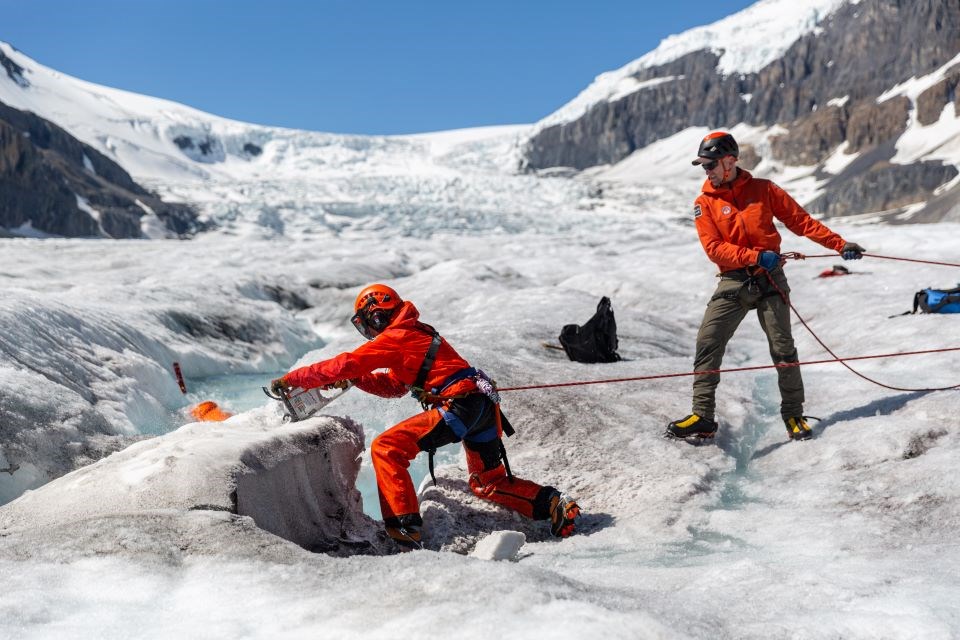With more snow on the ground comes more visitors to Jasper National Park, leading Parks Canada to remind people about safety in the great outdoors.
Parks Canada does its part to make sure that everyone can visit places throughout Jasper National Park safely time and time again, says visitor safety specialist Tim Johnson.
“Safety is a shared responsibility,” he said. “It's also part of the public's responsibility to be informed and get the right equipment to enjoy these special places.”
That means being ready, being aware and being well prepared.
For instance, there are fences at such locations as Maligne Canyon, the Edith Cavell Path of the Glacier Trail and the Toe of the Athabasca Glacier. While these fences don’t indicate those areas past those points are closed, they do indicate that there are more significant hazards ahead.
Anyone venturing beyond those fences is assuming the increased risks associated with those hazards and should have training, experience and proper gear to manage those risks.
“Our messaging has always been that is an activity that is higher risk than normal,” Johnson said.
“People should be aware of those risks, but ultimately it is those people's responsibility to assume those risks if they're going to be going into a spot like that.”
Those risks might not be immediately apparent. As an example, snow or chunks of the Angel Glacier occasionally fall off and land in the tarn (or lake) below. This can cause a glacial lake outflow, essentially a tidal wave that comes down the creek. It has happened twice in the last 10 years including once on a Saturday afternoon with numerous visitors in proximity, Johnson said. Such events can have a very high consequence.
“If they choose to assume those risks, that is their assumed risk at that point. It’s on them,” Johnson said.
Those fenced areas are different than those that are fully closed to the public for ecological or visitor safety concerns such as the seasonal Caribou Closures. A list of area closures can be found on the Jasper National Park Website under Important Bulletins.
Anyone going into the backcountry should bring some type of satellite-enabled communication device. Regular mobile phones just aren’t going to cut it.
“If an accident happens, and you're relying on your cell phone, you're going to be in trouble,” Johnson said.
With those satellite-enabled communicators such as a SPOT device, it is very important to use the SOS button even for minor injuries. Hesitating does not help Parks Canada to help you. It enables rescuers to have a direct two-way communication. Some devices also allow them to track your location in real time.
It is not unusual for people to require assistance but not have the proper communication devices, and they end up having to flag down passing vehicles or driving to areas with cell service.
“And then all of a sudden, our rescue is delayed,” Johnson said.
“That’s especially important in winter, where we have minimal daylight. If we do need to get a helicopter in there, we're working with very limited daylight hours.”
Rescue helicopters frequently come from places such as Golden and Revelstoke, meaning there is already a delay to arriving on scene.
Recreationalists should also check avalanche conditions before going out. Park’s Canada Mountain Safety webpage is the best place to find more information about which trails have what risk of avalanches.
The avalanche terrain on a lot of the trails within the park are rated under the Avalanche Terrain Exposure Scale (ATES) rating.
“Sometimes people assume that the trail they're traveling on doesn't have any avalanche hazard, but there actually could be significant overhead hazard. The ATES rating would help identify whether or not you're actually in simple avalanche terrain or potentially in challenging or complex avalanche terrain,” Johnson said.
“People just are often unaware of what is above their heads. Don't assume that you're not in avalanche terrain just because you're walking through the trees in the valley bottom. It definitely could be death from above.”




